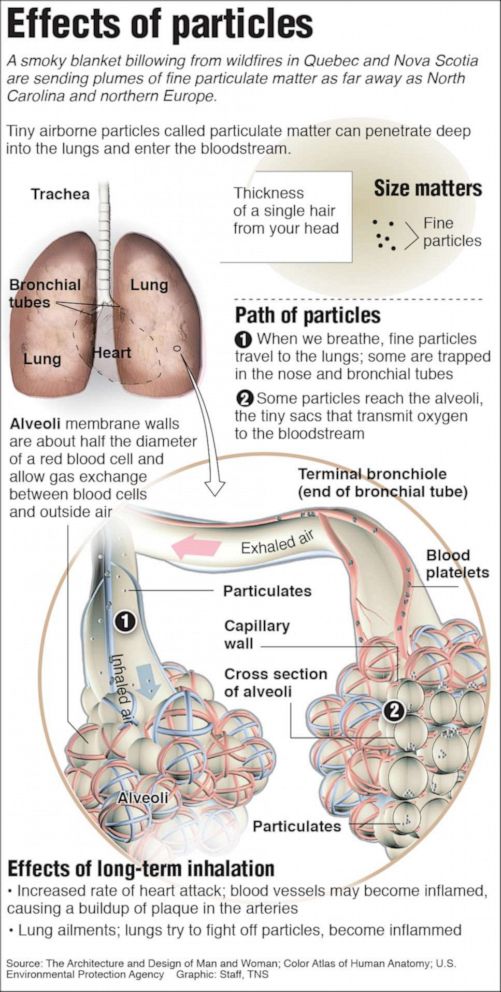Wildfire smoke from Canada has clouded much of the Northeast, leaving millions of Americans exposed to unhealthy levels of particulate matter.
Here’s what you need to know on the dangers of wildfire smoke and why it is so toxic to your health.
What is considered a dangerous air quality level?
Air quality is measured by the Environmental Protection Agency’s air quality index (AQI), which ranges from 0 to 500. A higher level indicates a greater level of pollution and health concern.
Levels under 100 are generally considered safe. Unhealthy levels range from 101 to 300, where more sensitive groups may experience symptoms at lower levels. The EPA provides an interactive map to track air quality in your specific area.
In New York City, levels hit over 400 in some parts this week. A value over 300 is considered hazardous, where everyone is likely to be affected from the poor breathing conditions.
Some hospitals have already seen patients suffering from the poor air.
“We’ve seen a mild increase in the number of patients presenting specifically with what we suspect is related to the environment, which include things like coughs, wheezing, shortness of breath and even headaches,” Dr. Frederick Davis, vice chair of emergency medicine at Long Island Jewish Medical Center in Queens, New York, told ABC News.
What are the dangers of inhaling wildfire smoke?
Particulate matter (PM) is made up of tiny pieces of solid or liquid in the air including dust, dirt, soot and smoke, according to the Centers for Disease Control and Prevention.
Inhaled particles are typically categorized into two groups: PM10 and PM2.5 – the number representing the size across the particle in micrometers.
These particles are invisible to the human eye. The diameter of a human hair is almost 30 times larger than one of these smaller particles.
While larger particles may irritate your eyes, nose and throat, smaller particles pose an even greater threat. They can seep deep into your lungs or even your blood and cause long-term damage.
“The smaller particles are the dangerous ones. They can cause asthma. They can cause you to have not as good immune responses. You can get more colds, for example, you get more asthma,” Dr. Kari Nadeau, a professor at Harvard in the School of Public Health and chair of the Environmental Health Department, told ABC News.
“If you’re elderly, you can get more strokes and heart attacks. Over time, it can lead to increased cancer,” she added.
In fact, Nadeau estimates an AQI of 150 is equivalent to smoking an estimated seven cigarettes a day for someone spending the majority of their time outdoors.
“We try to do the cigarette equivalent, but most likely the wildfire smoke is much more toxic than a cigarette,” Nadeau said.

A graphic shows the damage particulate matter can do to your lungs.
Tribune News Service via Newscom
Who is most at risk?
Those who have lung diseases like COPD or asthma as well as those suffering from heart disease are at highest risk from wildfire smoke.
Children and older adults are also more likely to be affected.
“Those that are most at risk are those that have underlying chronic pulmonary issues … others include those of the extremes of age so those who are very old, very young, particularly because of underdeveloped lungs or lungs that are older that maybe can’t handle as much of the debris as we’re seeing in the air,” Davis said.
Exposure to wildfire smoke may lead to physical changes during pregnancy and expectant mothers may be at risk of preterm birth or babies with a low-birth weight.
What are the symptoms to look out for?
While those who are more sensitive may be at-risk for severe symptoms, anyone can get sick from wildfire smoke.
Some of the immediate effects include coughing, trouble breathing, a scratchy throat and chest pain, according to the CDC.
Officials are warning residents to stay indoors as much as possible, use a well-fitting N-95 mask when heading outside and try using an air filter at home if available.

